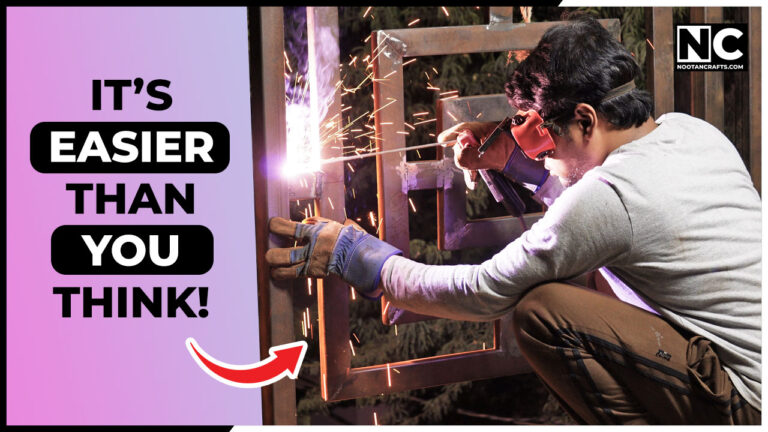Hello, guys! How are you doing? In this blog post, I will share how to make a metal railing for a balcony with square iron pipes, including my custom design created in SketchUp. It’s probably the biggest metal DIY project I have worked on, and it took me around two and a half months to make it happen. If you read this complete post, you’ll learn several new things. So, let’s do this!
Watch my video on YouTube!
How to Make a Metal Railing for Balcony – Outdoor Metal Railing

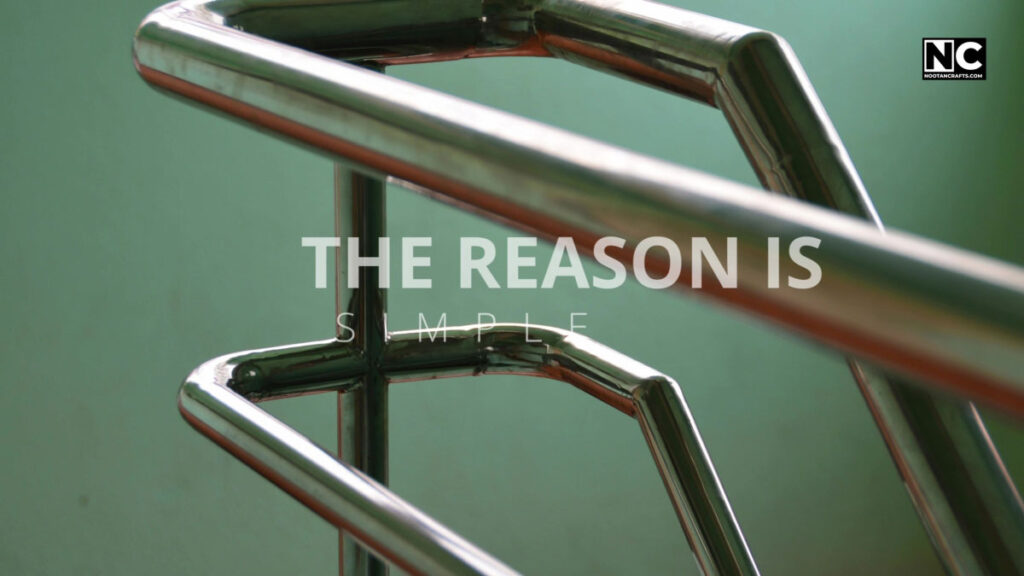
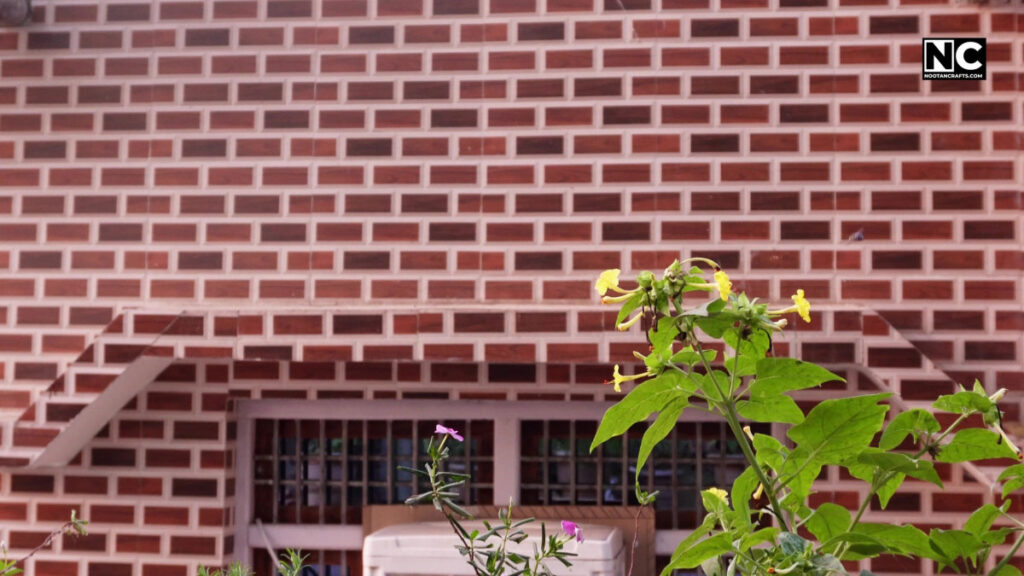
You might be wondering why I used iron instead of stainless steel. The reason is simple: it’s cheaper and easier to work with. You can also paint it according to your home’s theme.
1. Balcony Railing Ideas – Metal Railing Design Exploration
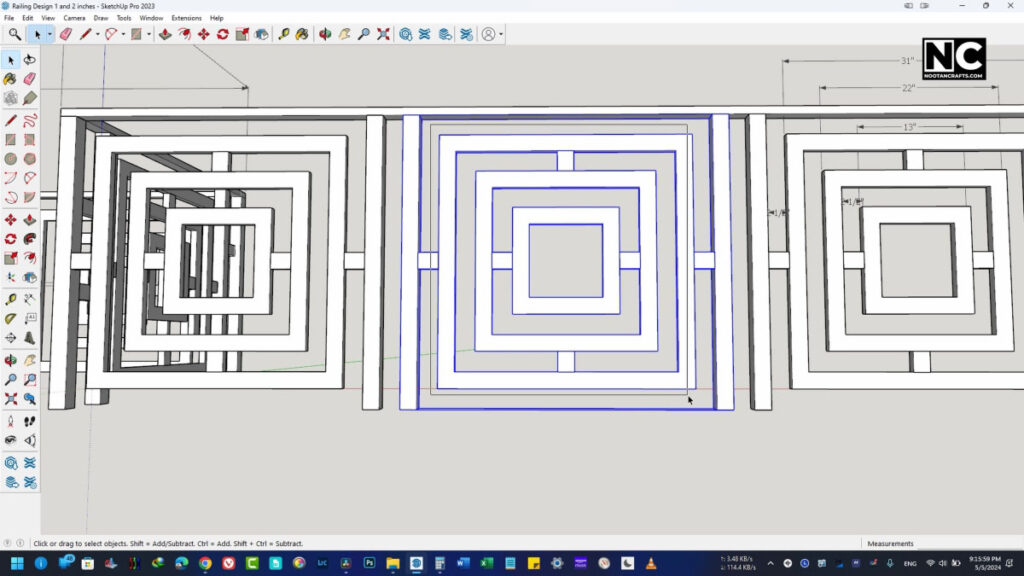

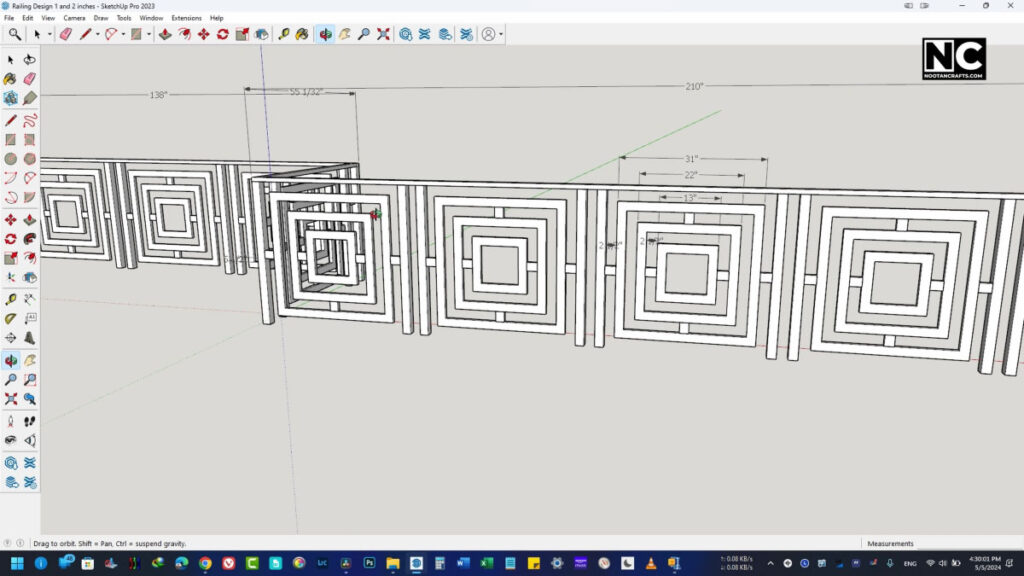
I was looking for a simple, timeless balcony railing design for the house front, but I couldn’t find anything that suited my taste. That’s why I made my design using Sketchup, which combines three squares. I used a 2×2-inch square pipe for the post and a 2×1-inch rectangular pipe for the rest of the railing components. I needed approximately 260 feet of rectangular and 60 feet of square pipes. Therefore, I purchased 13 rectangular and 3 square pipes, which were 20 feet each.
2. Cutting Straight Arms for the Squares

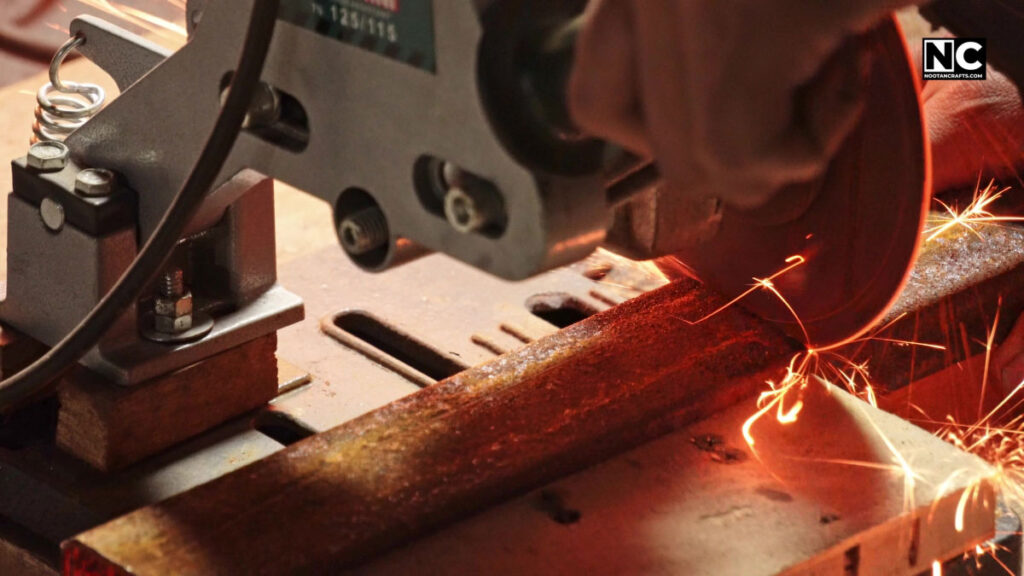
I started by cutting the rectangular pipes in three lengths: 11 inches, 21 inches, and 31 inches. These parts will form three squares of different sizes used in our design. I cut 116 pieces in total. It was challenging because it was hard for a single person to carry a 20-foot heavy pipe and move it back and forth.
3. Making Miter Cuts to Form Squares
Well, now I have smaller parts and can easily move them around. It is time to cut a 45-degree angle, and it’s easy, right? Nope, now I faced another challenge, which my stupid mind didn’t see coming.
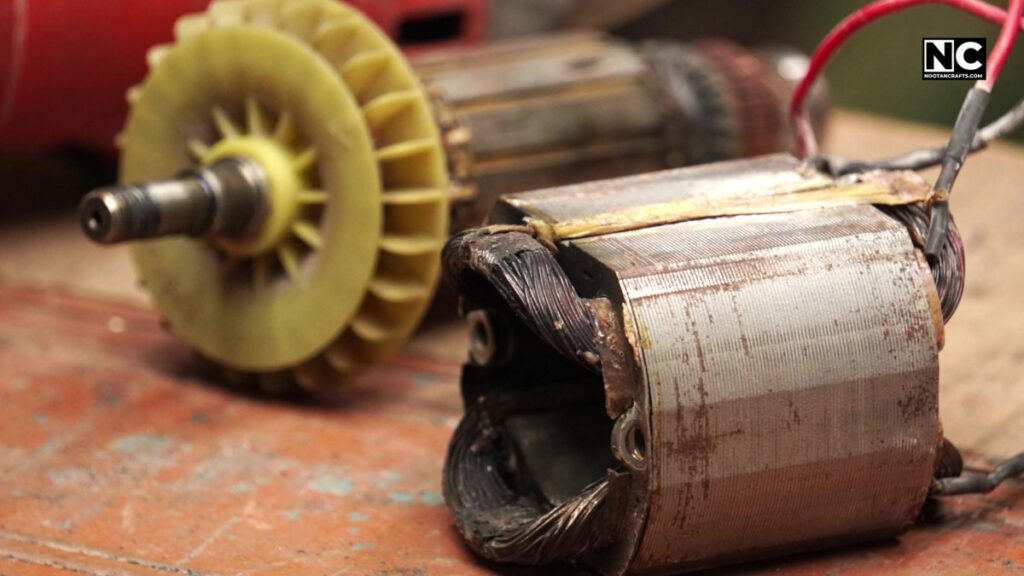
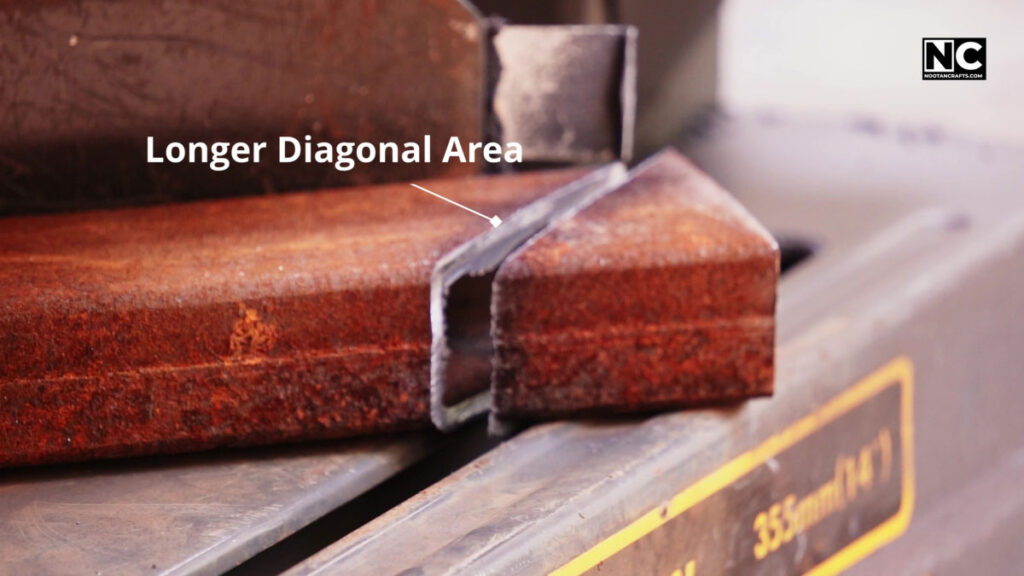
Initially, I took it as a lighter project, but my illusion vanished as soon as my angle grinder burned. I used an angle grinder by attaching a stand for cutting, which isn’t meant to handle this heavy workload because the blade has to cover a larger area due to angled cutting. I instantly ordered an actual metal cutting saw from Amazon.
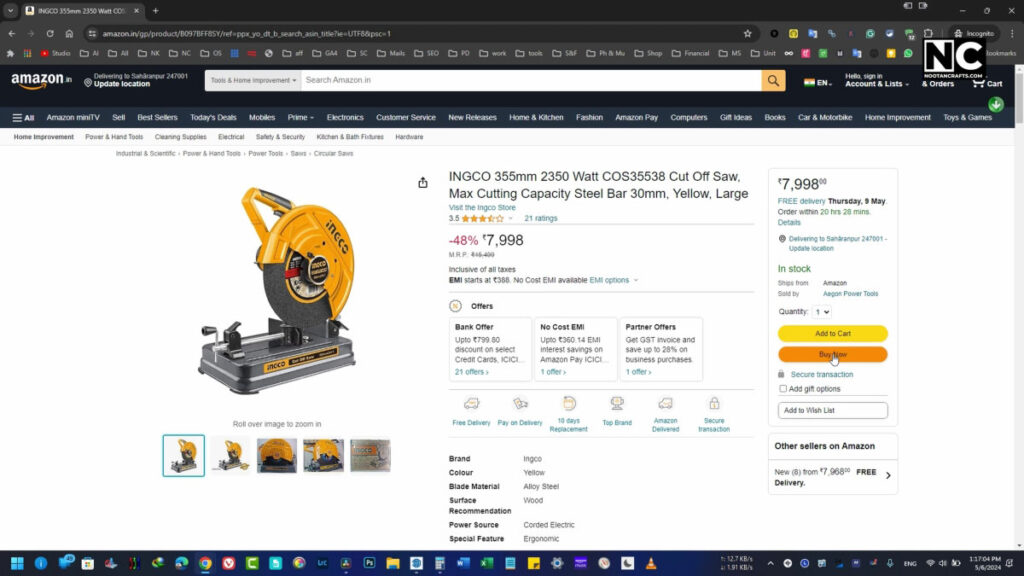
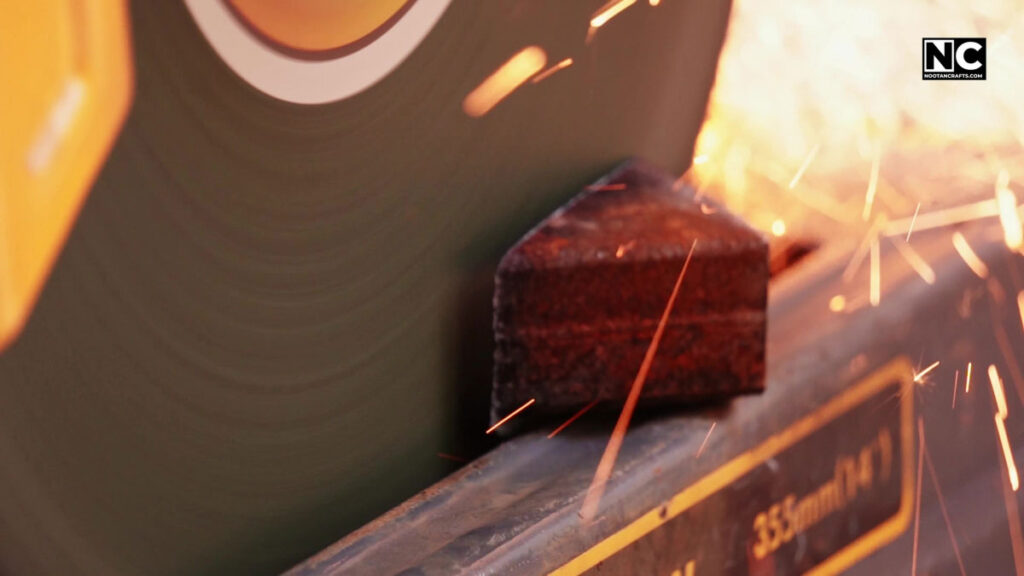

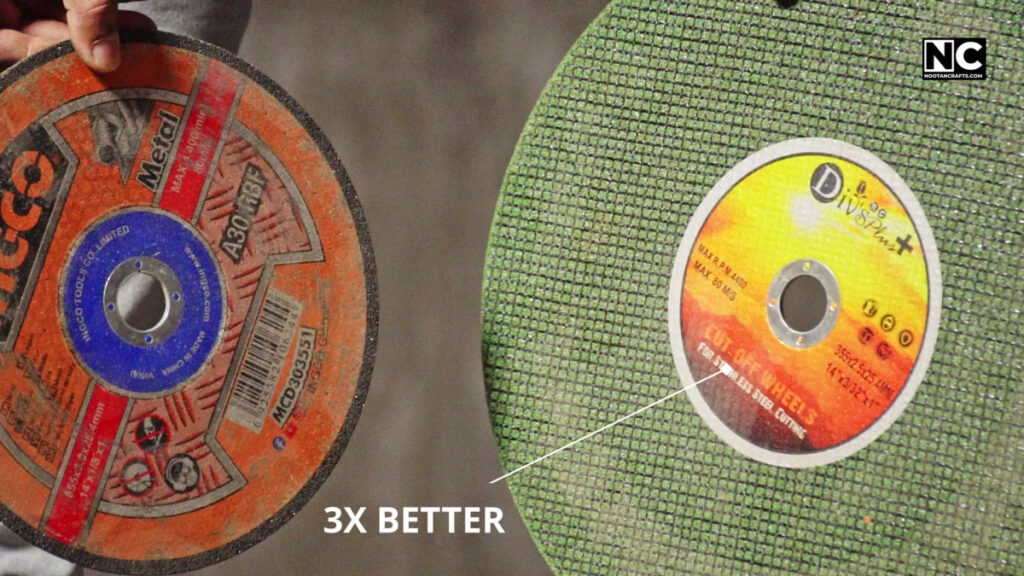
Oh, man, that cutting saw is a beast. I didn’t use a powerful machine like it before. Now, the process has become enjoyable. However, it still took me quite a time because now I have to cut a pipe twice at both ends, which means I have to make 116×2, which means 232 cuts. Interesting fact: the original blade provided with the saw only lasted for around 100 cuts before it failed to reach the full depth of a 1×2-inch pipe. In contrast, a cheap local market blade lasted three times compared to the original, which was unbelievable.
4. Squares Formation (Welding, Grinding, and Rust Removal)
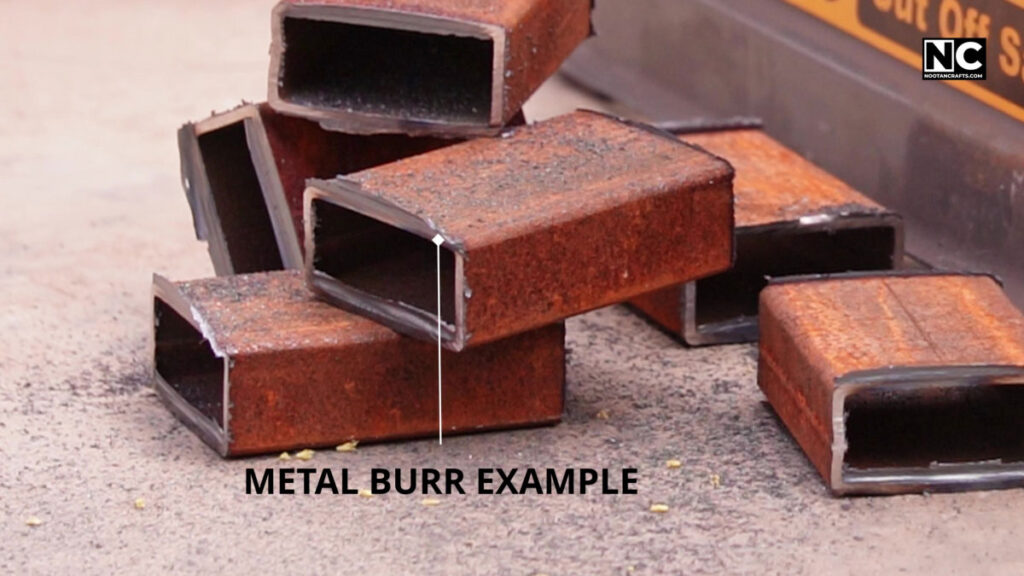

After cutting parts at an angle, I started making squares. I also want to tell you I had to clean the burr from the cut edges before making squares with an angle grinder which I forgot to film – it took me a few hours. I carefully placed the welding clamp to ensure the correct angle while welding. After that, I grind the extra weld to smoothen the surface, especially the corner.
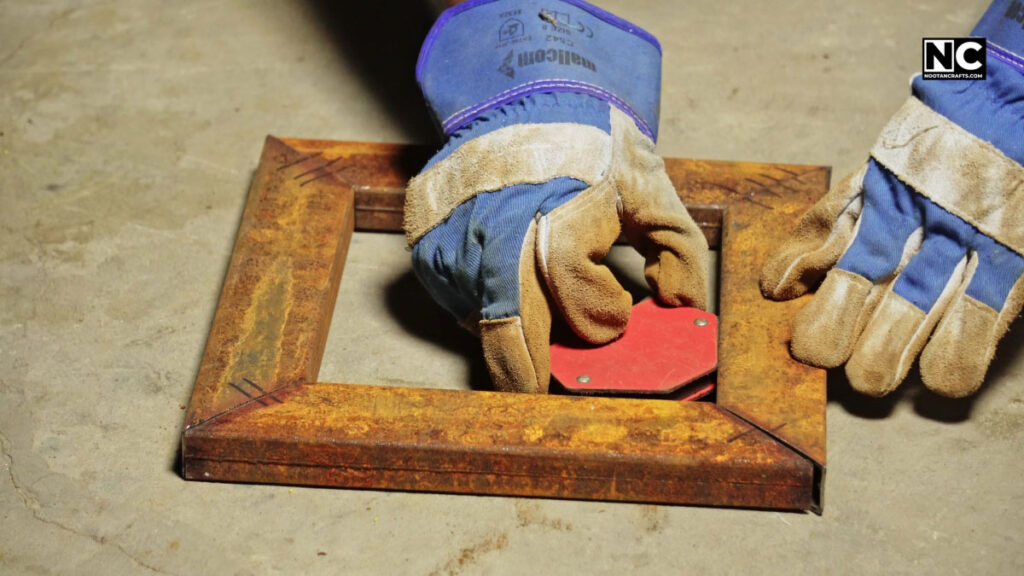
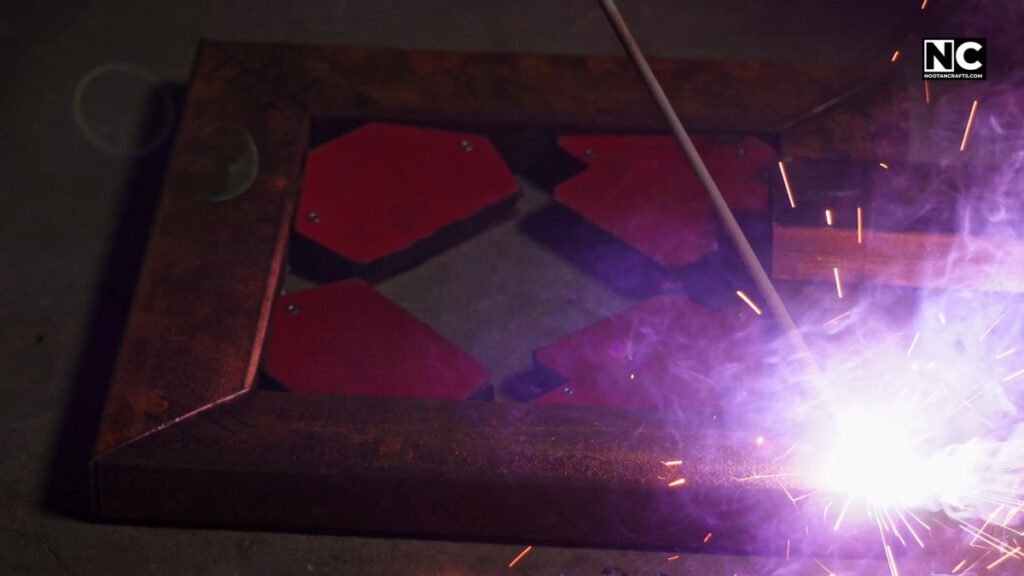
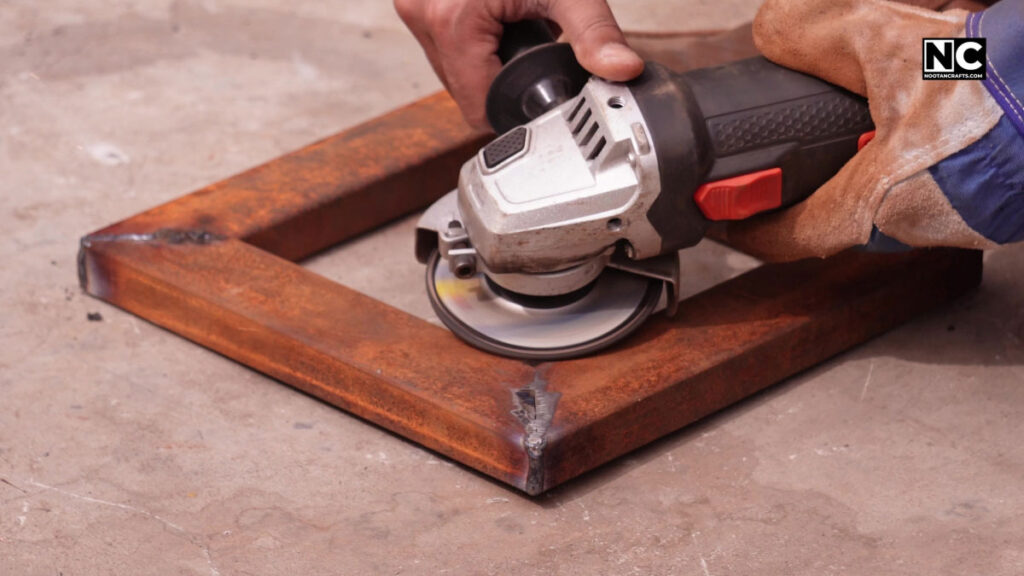
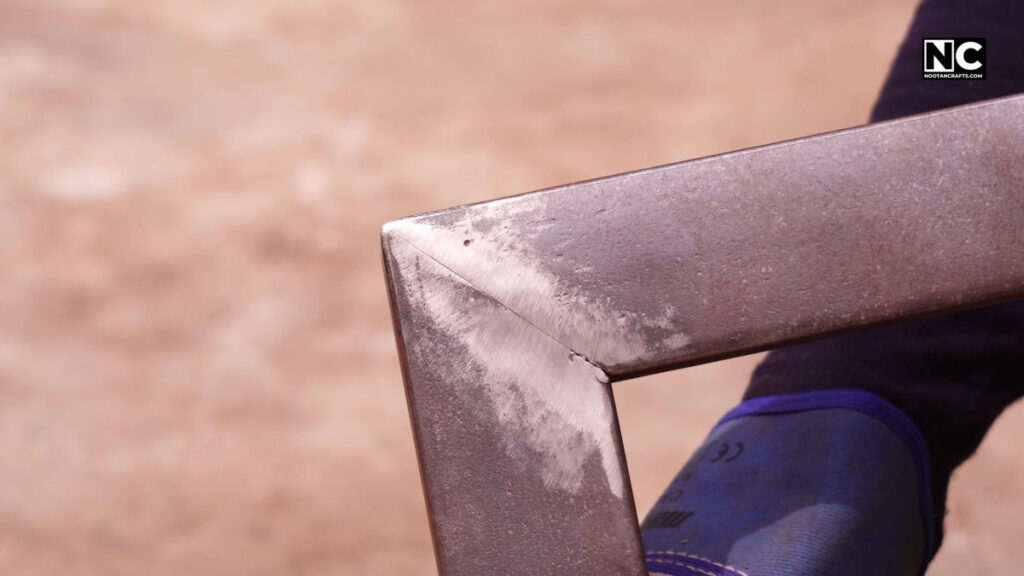
After assembling the design, I can’t do that because the grinder can’t get inside that tight area. I tried using an 80-grit flap disk in the first frame, which undoubtedly provided a smoother surface. However, I feared weakening the joint, so I avoided it.
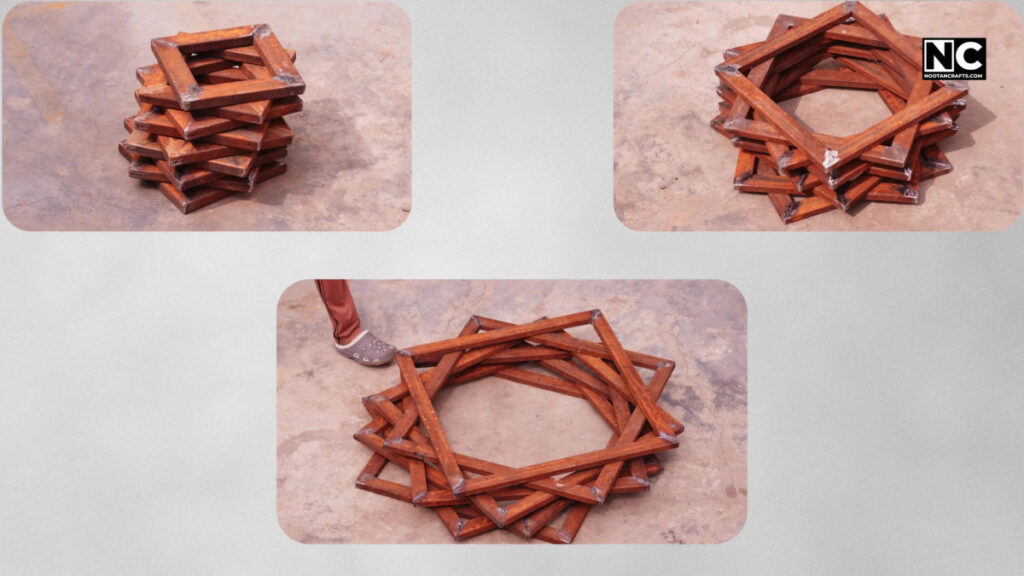
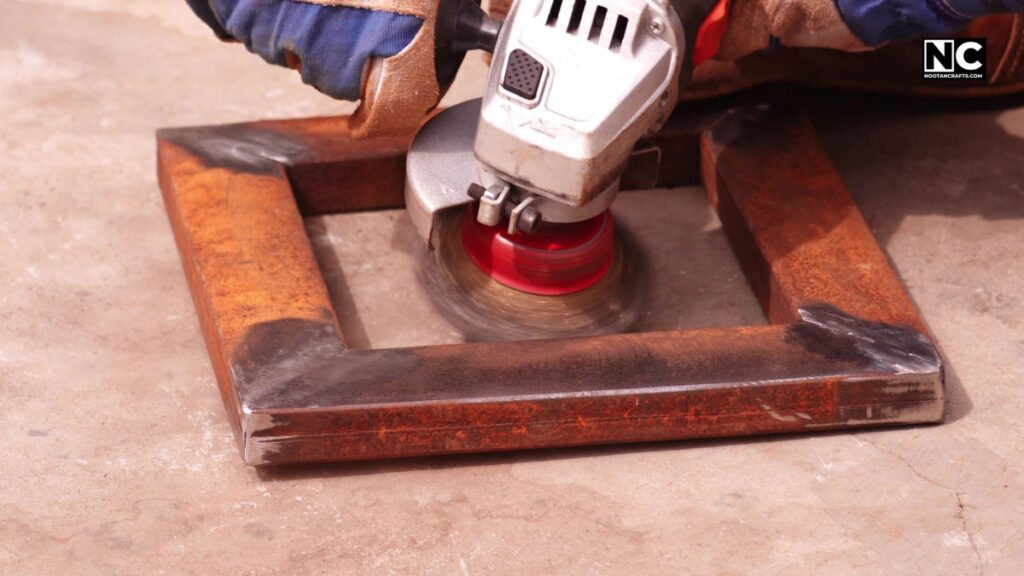
Finally, I used the rust-removing wire cup, providing a clean-looking surface ready to be painted. Completing all 29 squares took me a few days. It’s a tedious task as you must follow all the processes with each piece: cutting, deburring, welding, grinding, and rust removal. When you’re working alone, it becomes more challenging because you have to fetch every tool and move things by yourself. Video shooting is another extra work that breaks the flow. If you drop a like subscribe to the channel, it will motivate me to make detailed videos like this. I completed 11-, 21-, and 31-inches squares, and now it’s time to attach them to form the whole design.
5. Forming the Complete Design with Squares
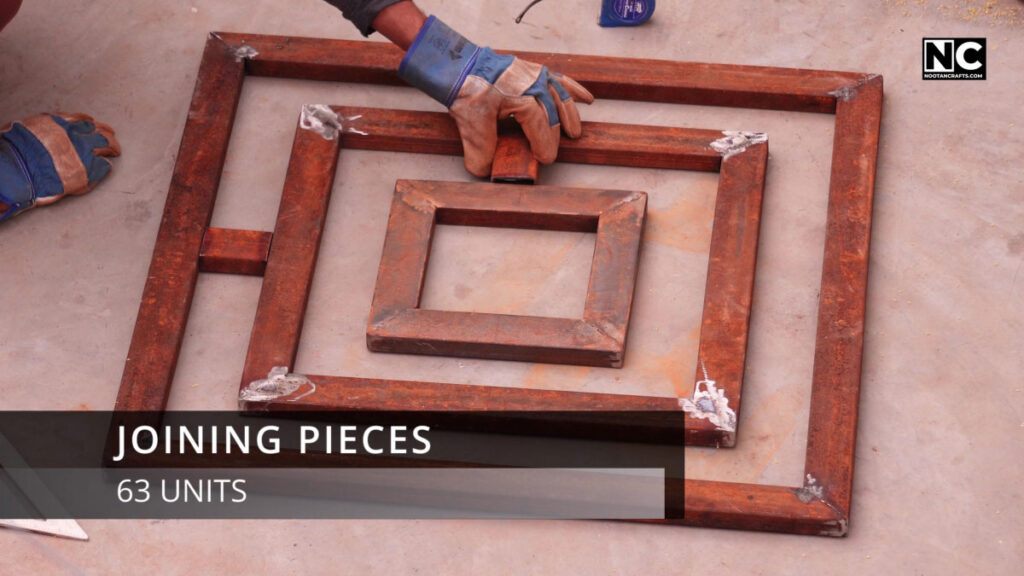
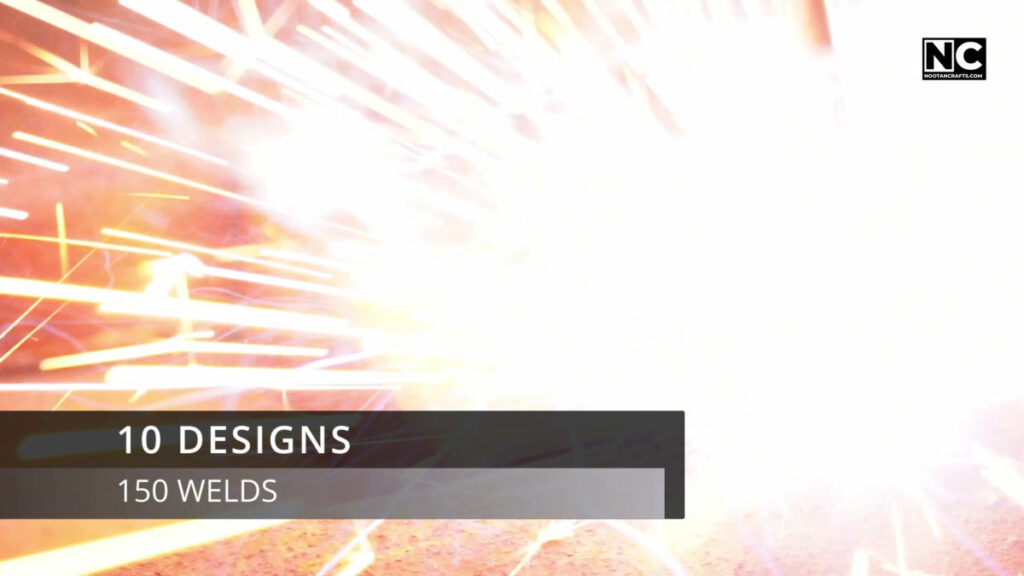
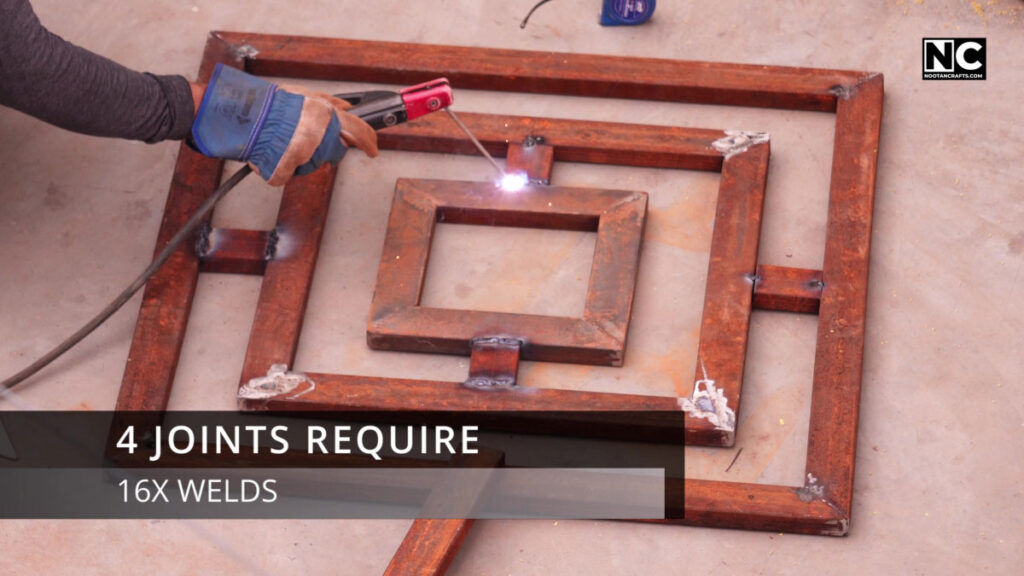
I started to cut down the joining pieces from the same rectangular pipe. I will need 63 pieces to attach all the squares to complete the designs. In my project, there are a total of 10 sets of designs. My design formation is simple: just place all three squares like this and join them with small pieces. Now imagine the welding work; I had to weld 16 times to form a single design because each connecting piece requires four welds when considering both sides of the joints. That made a total number of 150 welding joints, and it took me a few days.
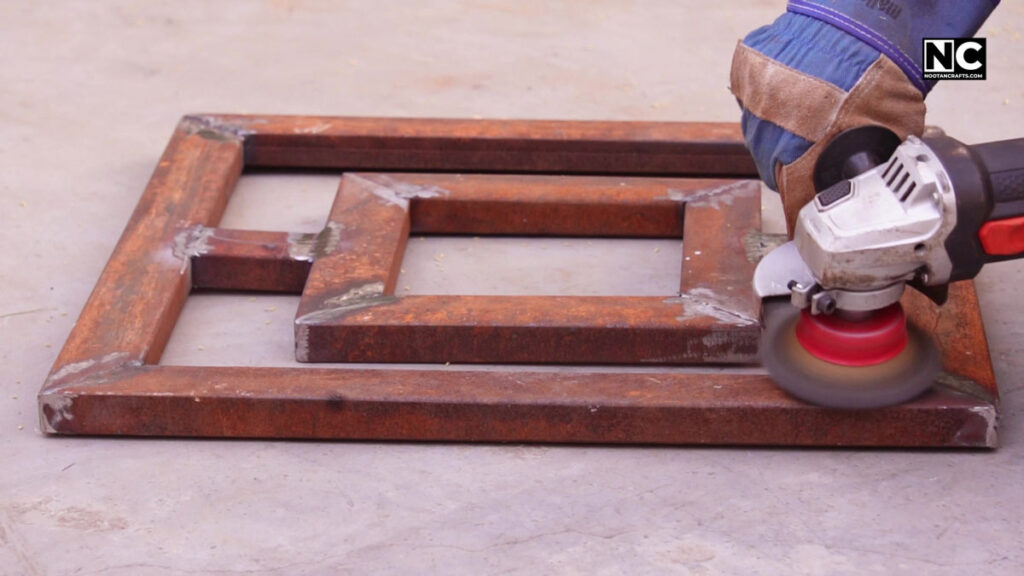
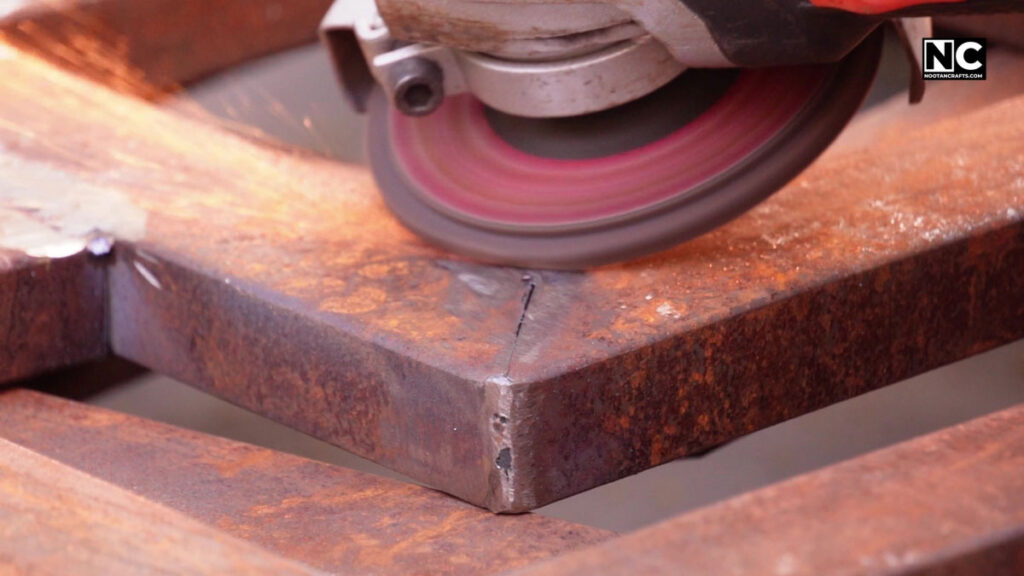
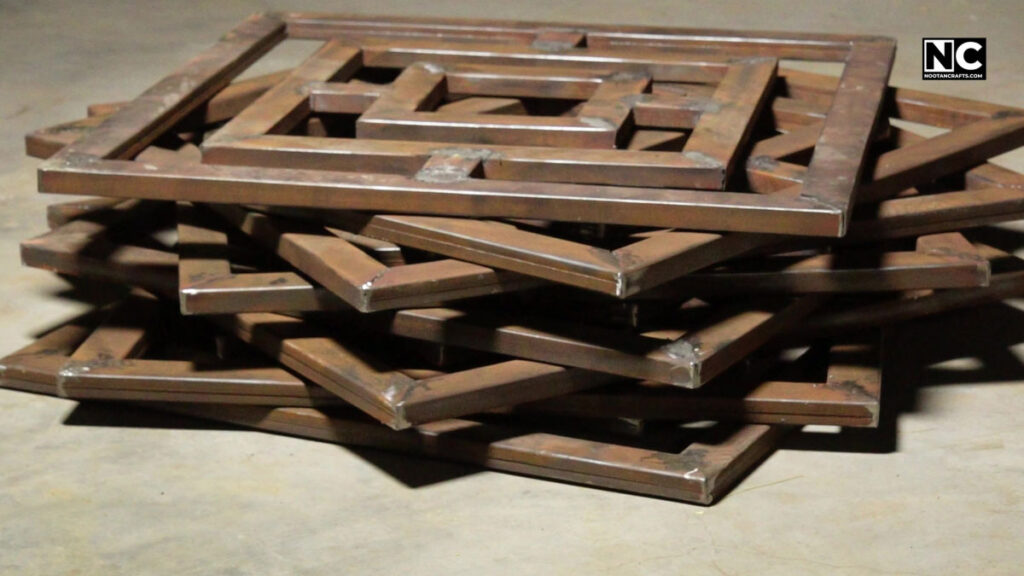
No, it’s not over yet; the real challenging task is coming: grinding and rust removal, which took me another few days. This task was tedious and physically intensive because the completed design was quite heavy. I had to flip it and move it around to work on all sides. Finally, I finished all the designs and started feeling confident because the more challenging part was already done. Now, I just have to make the frame and attach the design easily, right? Nope, the troubles aren’t over yet.
6. Preparing the Railing Posts
I needed the metal bracket to connect the railing post to the floor. I visited my local hardware shop but didn’t find it, so I decided to make my own. You might be surprised by the metal plates I used to make the post brackets. I recycled them from an old iron beam.
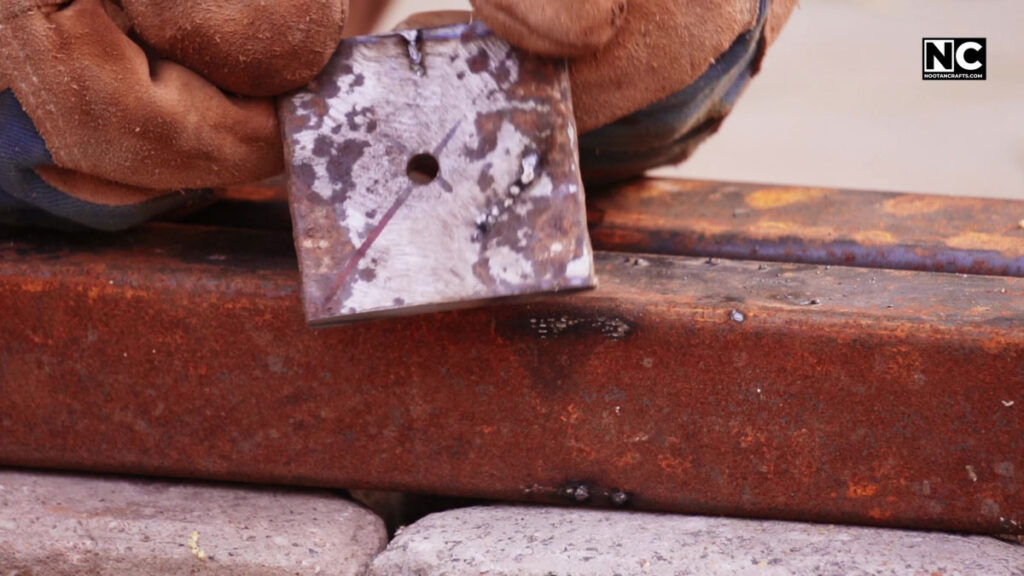
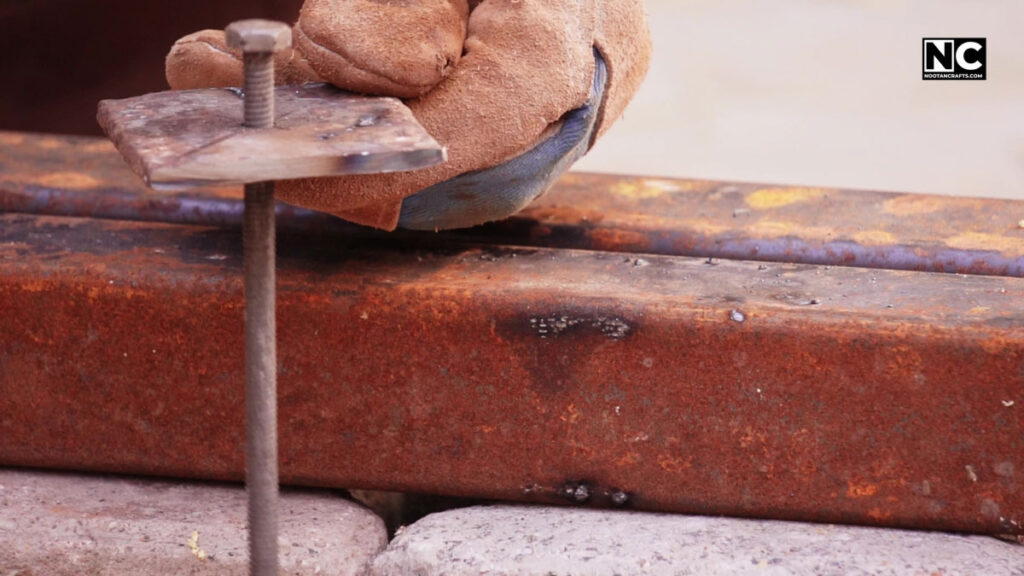
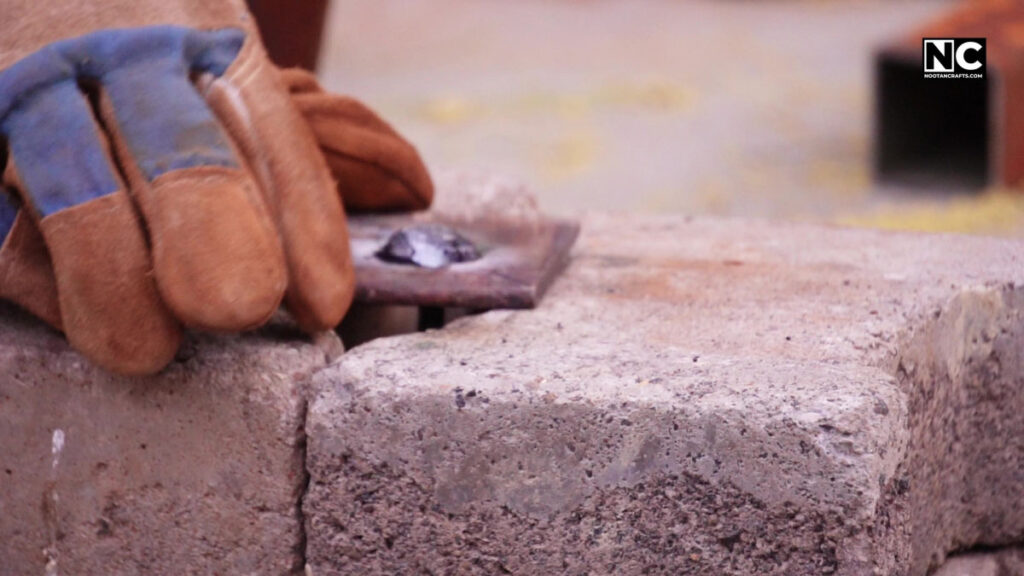
I cut the squares from that plate and put a hole at its center to drive a bolt into the floor, which will support the structure.
You might be wondering why I only used a single bolt for a post. The reason behind it is that I am using lots of posts, and my railing isn’t straight, so sideways force can’t affect it.
After that, I cut all the legs or posts from the square pipe. I used a total of 19 posts in the whole railing. Now, I started preparing the posts by welding brackets at the bottom. I attentively welded the joints because they would hold the entire railing structure and have to be strong.
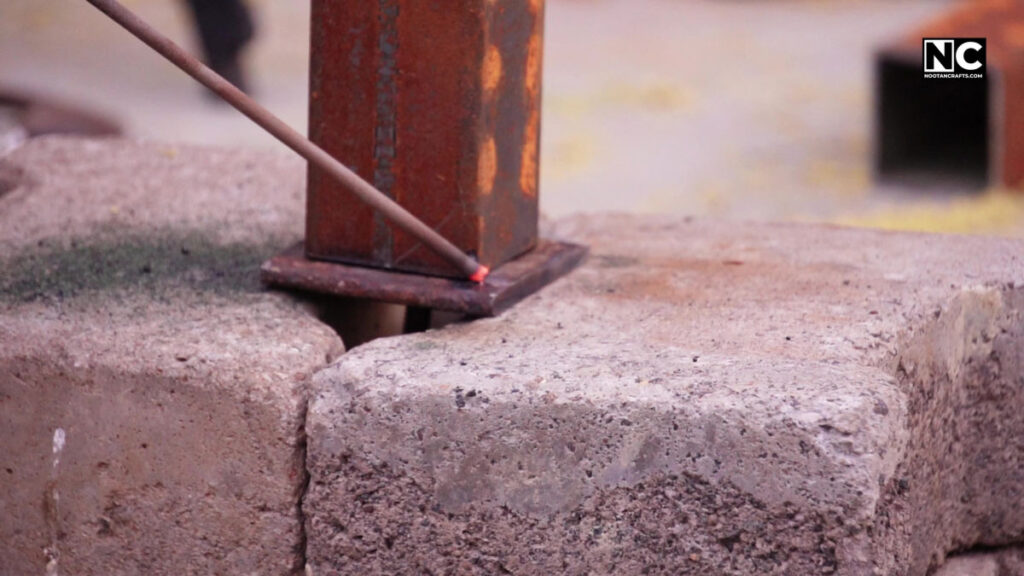
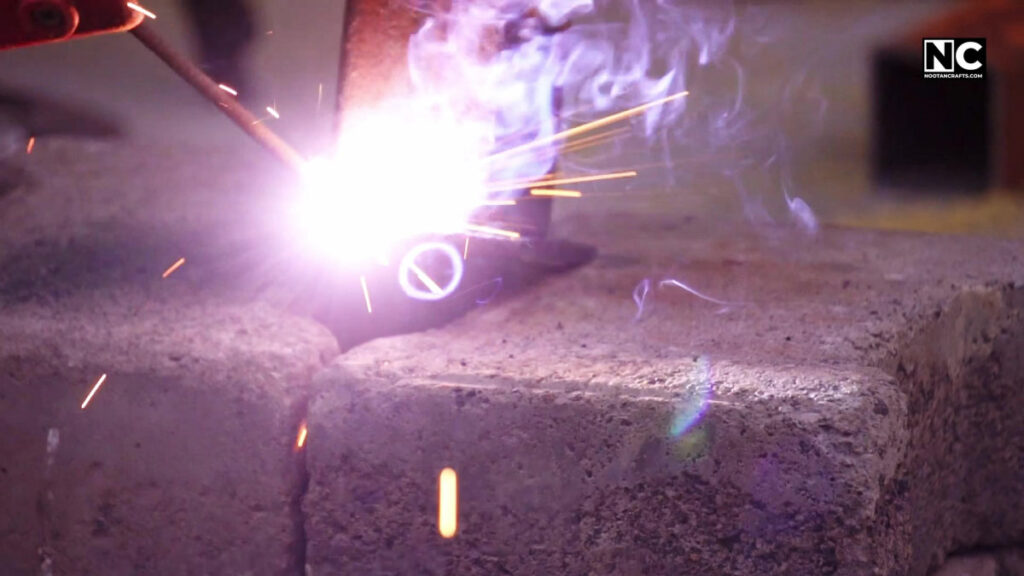
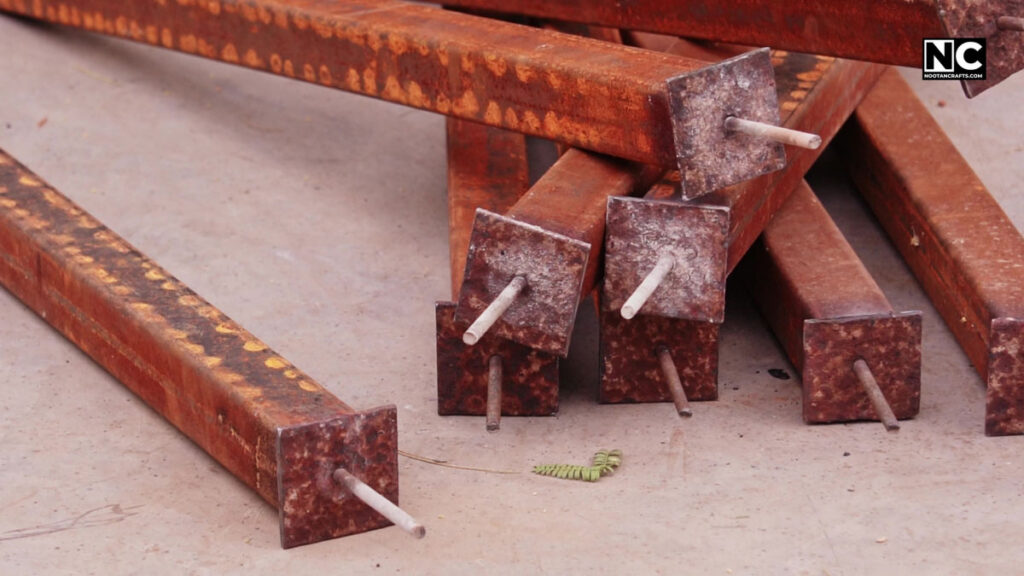
Now, the legs are ready; I just needed to remove the rust. It’s easier than when they get attached to the floor, so I quickly did the job. I also cleaned the remaining rectangular pipe, which will be needed to form the railing frame.
7. Making the Railing Frame

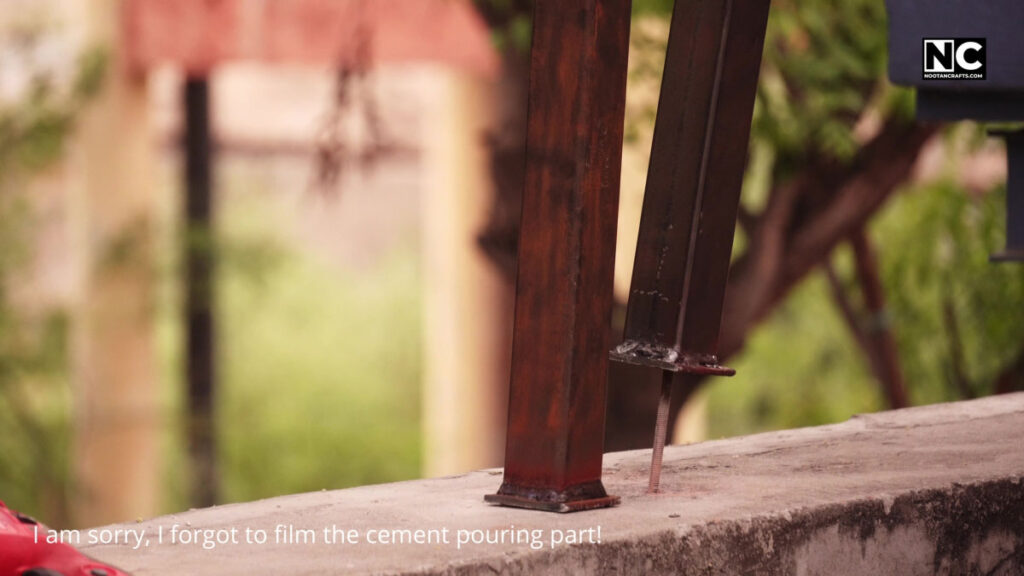
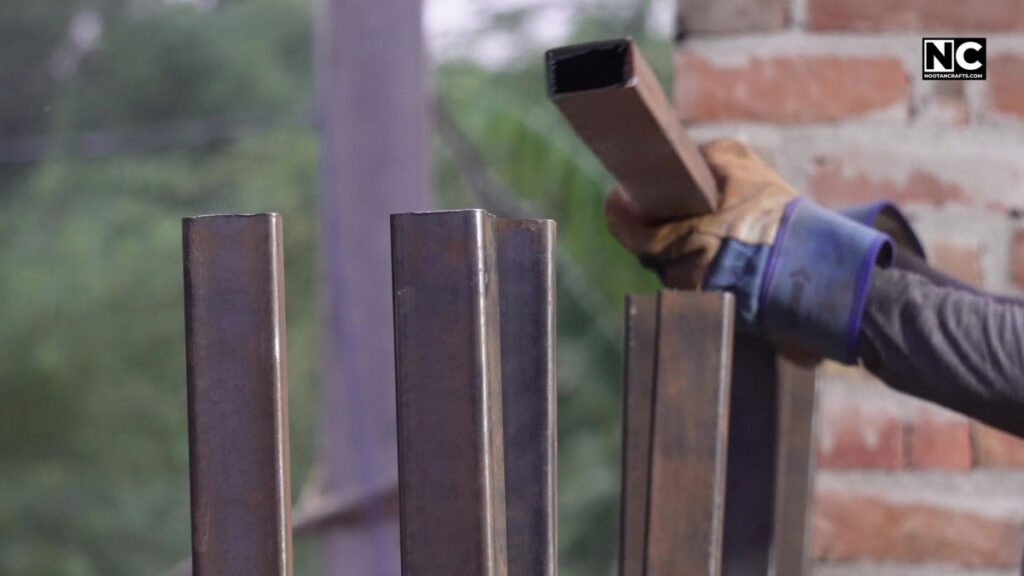
I used a hammer drill machine with a masonry bit to make holes in the floor. The drill bit was a bit thinner than the bolt used in the post bracket. After pouring the cement mixture, I started inserting the poles into the holes one by one. Moreover, I placed the rectangular pipe on top of that to complete the structure. You might be wondering; these posts are unaligned and wobbling. Don’t worry; once I weld the top pipes, the structure will hold and align itself.
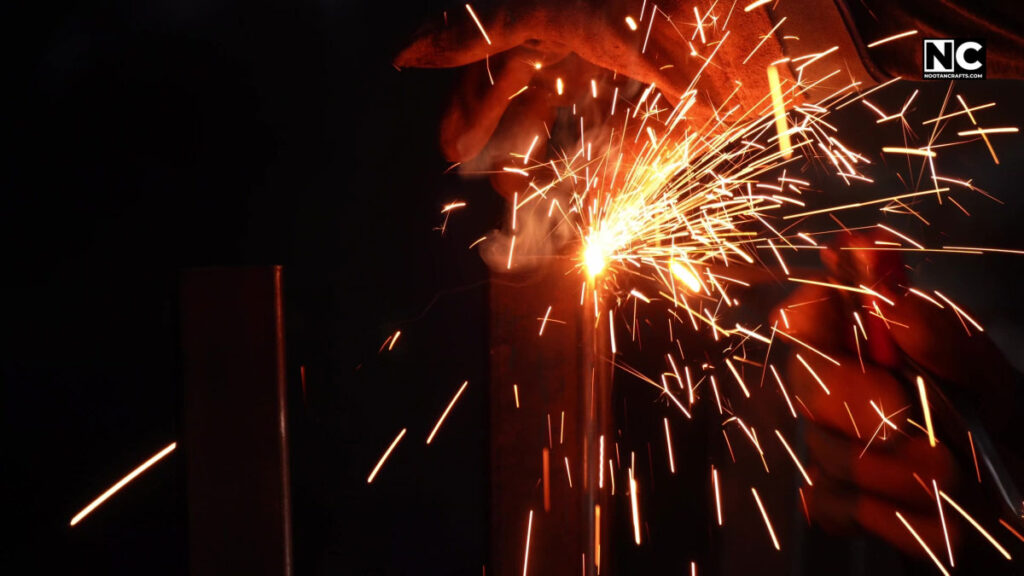
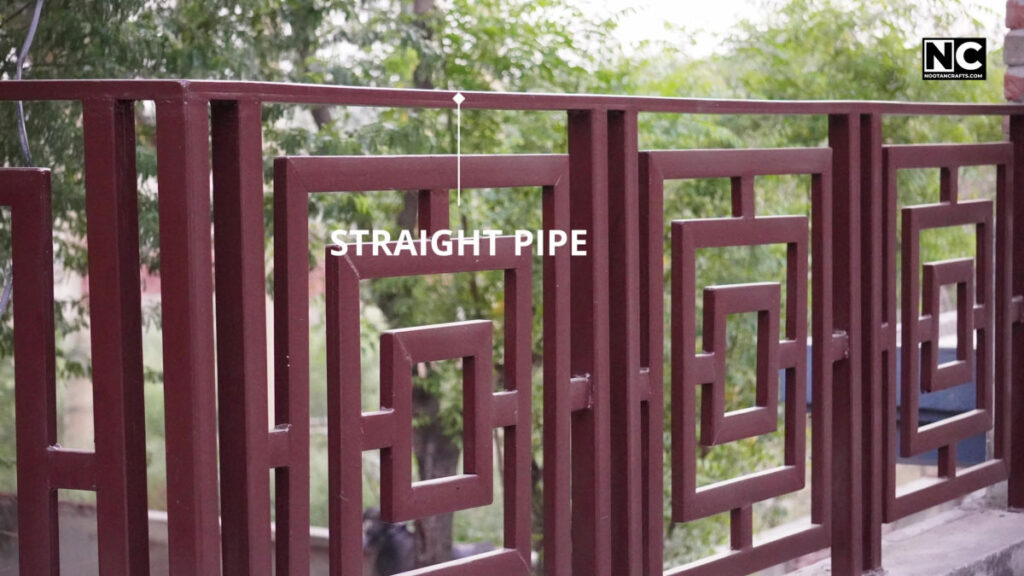
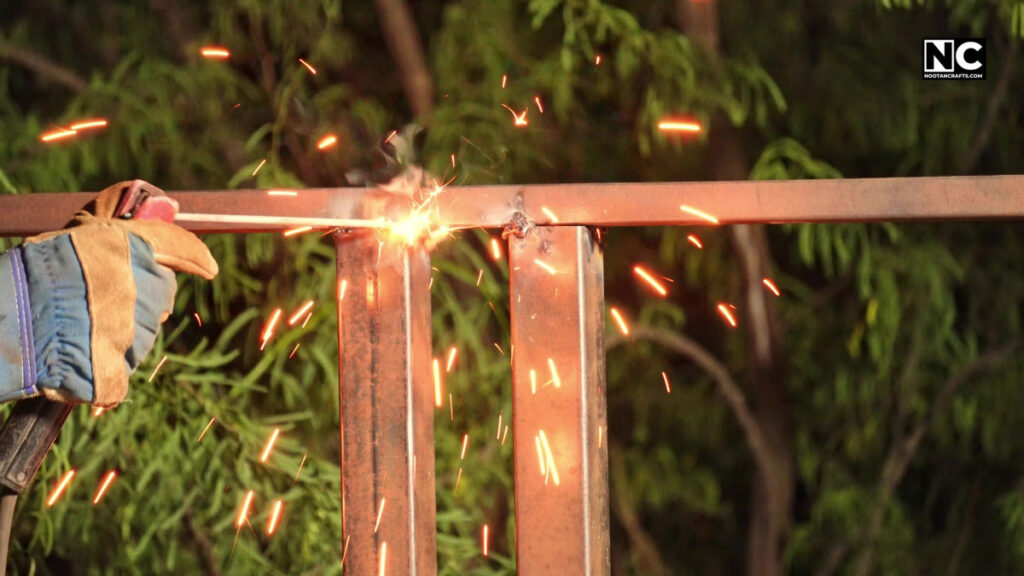
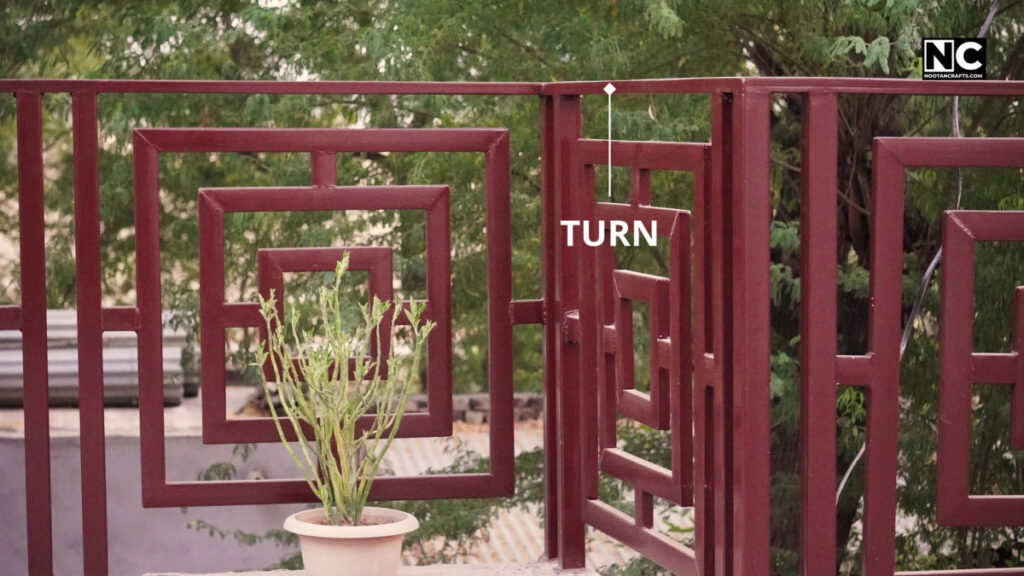
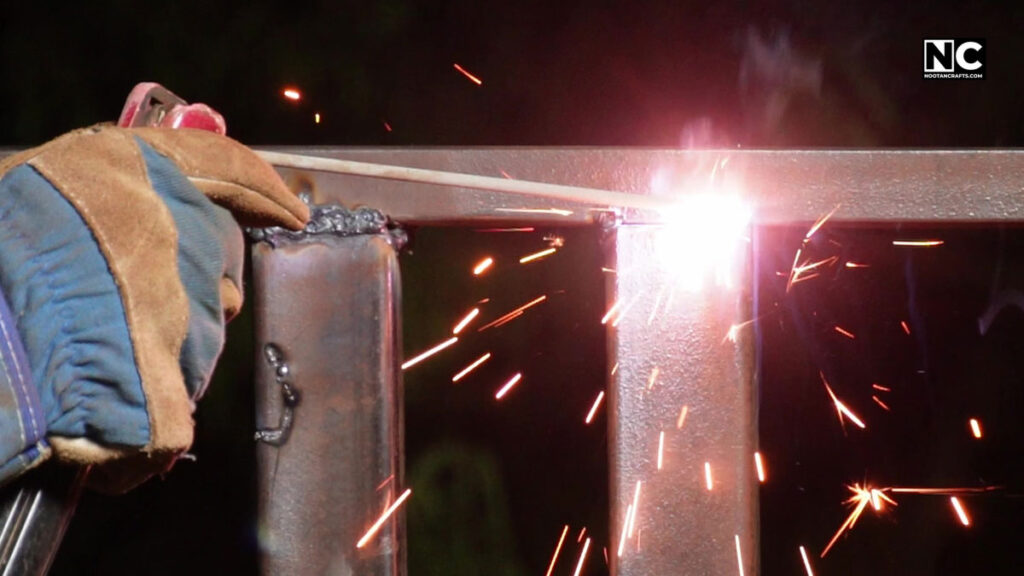
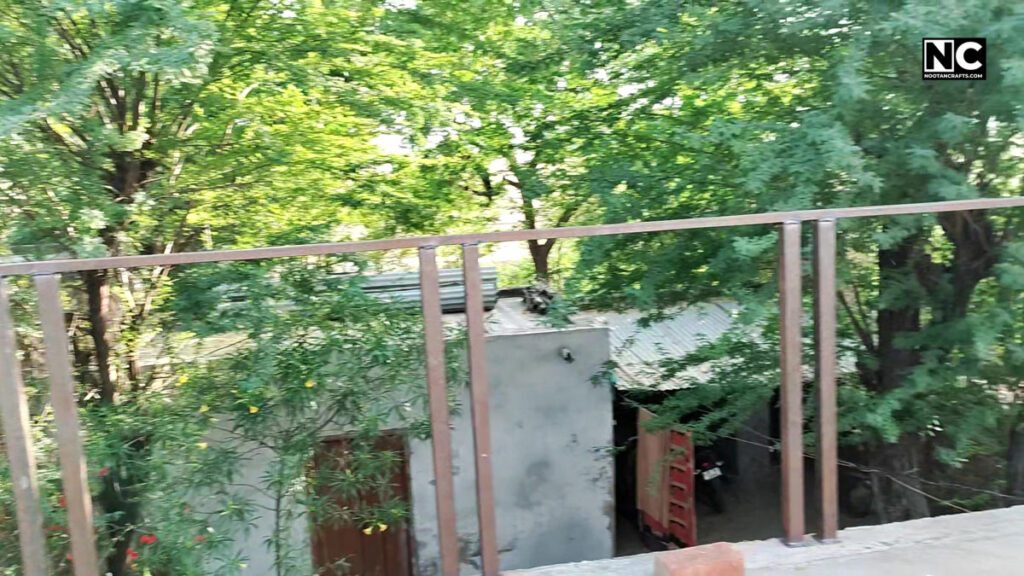
After that, I started welding the top portion of the frame while considering the level and right angle. First. I welded the edge post, which will help align the rest of the post because the top pipe is straight, and I have just taken care of the level. I did the same with the other side. As you can see, there is a turn in my railing design, which provides extra strength to hold the structure. I ensured the welding was appropriate because I didn’t want to compromise on the quality of the bond. After finalizing the frame structure, it’s time to attach my design.
8. Attaching the Designs to the Frame
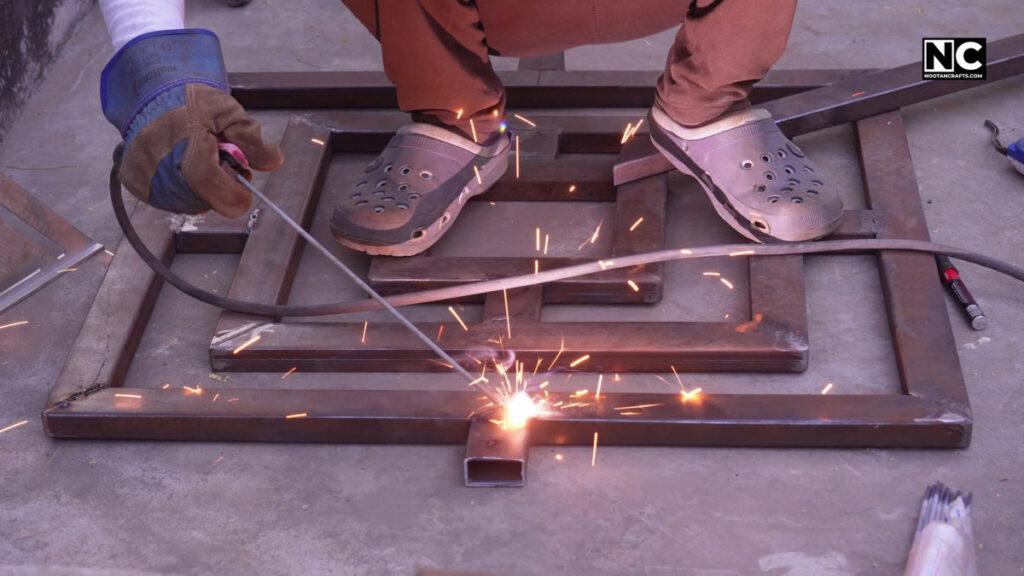
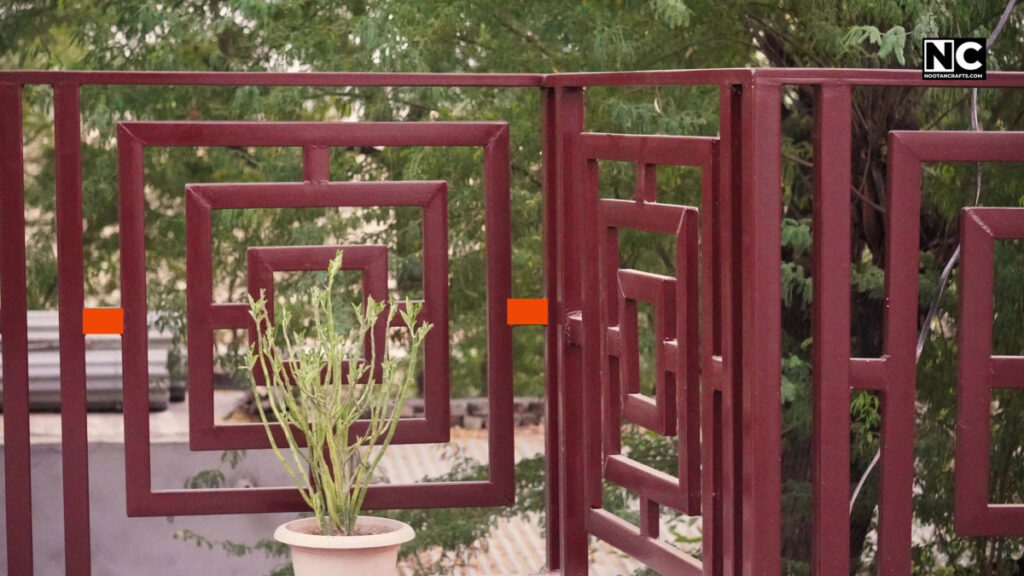
I started preparing the design by adding two connecting pieces on both sides, which will be welded to the frame. At first, I was skeptical whether joining the whole design with two connecting points would hold it properly. However, when I completed the first joint, I was satisfied.
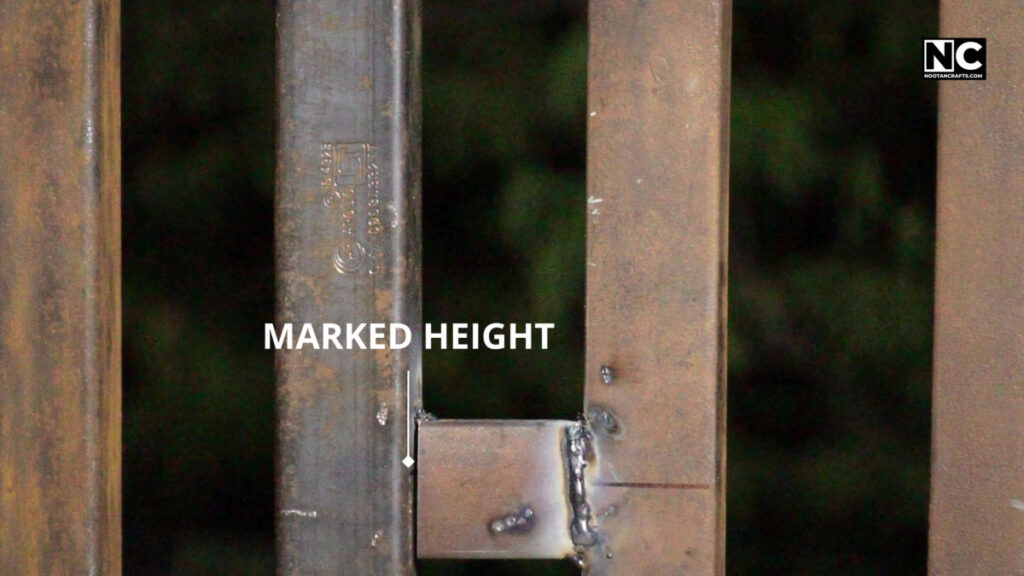
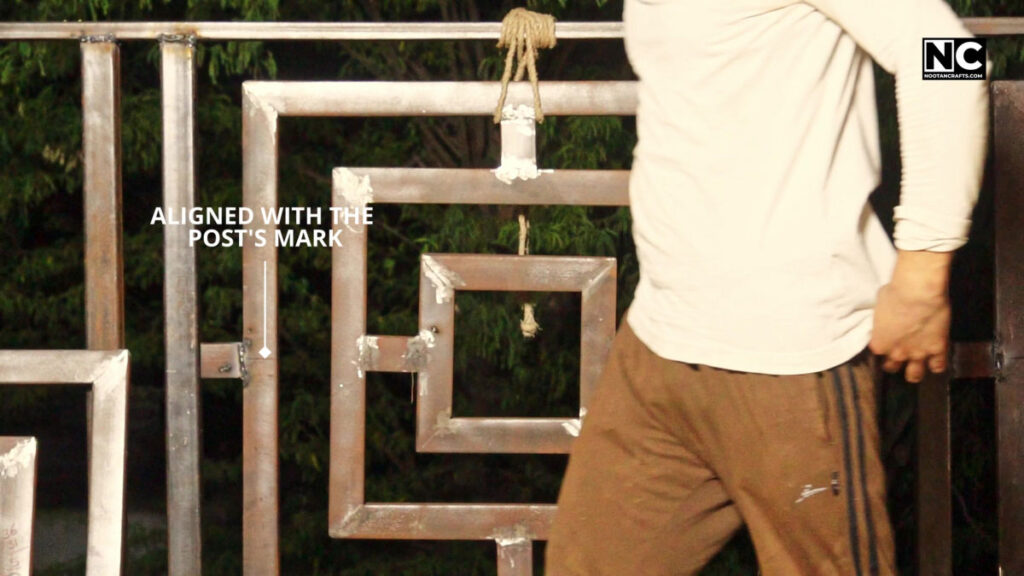
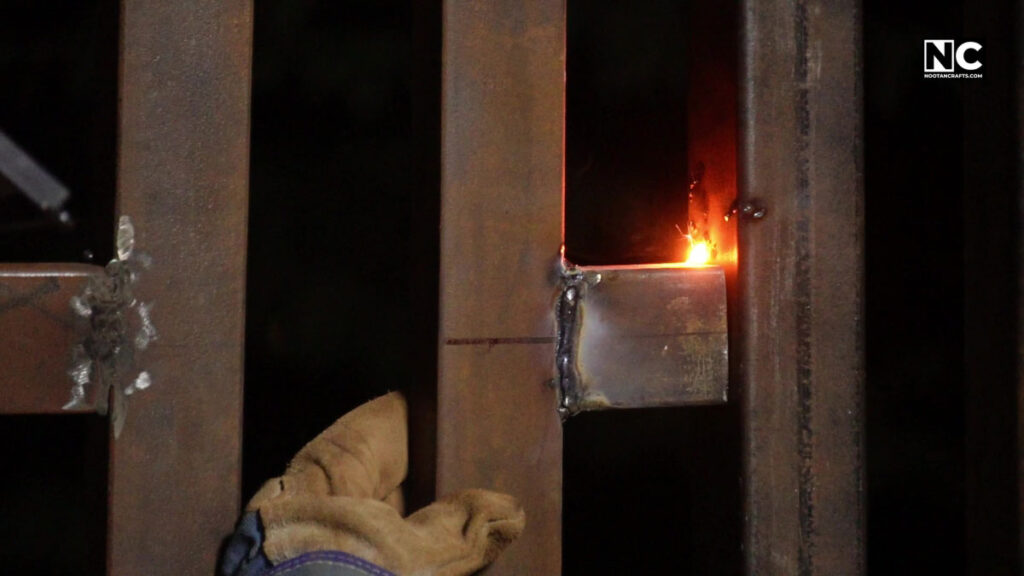
Now, the problem is how I can hold the frame for welding onto the frame because it is heavy, and I couldn’t hold it with one hand. Therefore, I tried several methods, but an old-school rope method worked. First, I marked the height on the post where the design needs to be welded. Then, I hung the design with rope and tightened it as it reached my desired place. The best thing about this method was it allowed me to change the position of the design. First, I did the temporary weld, then adjusted vertical and horizontal levels and spacing between the frame and design.

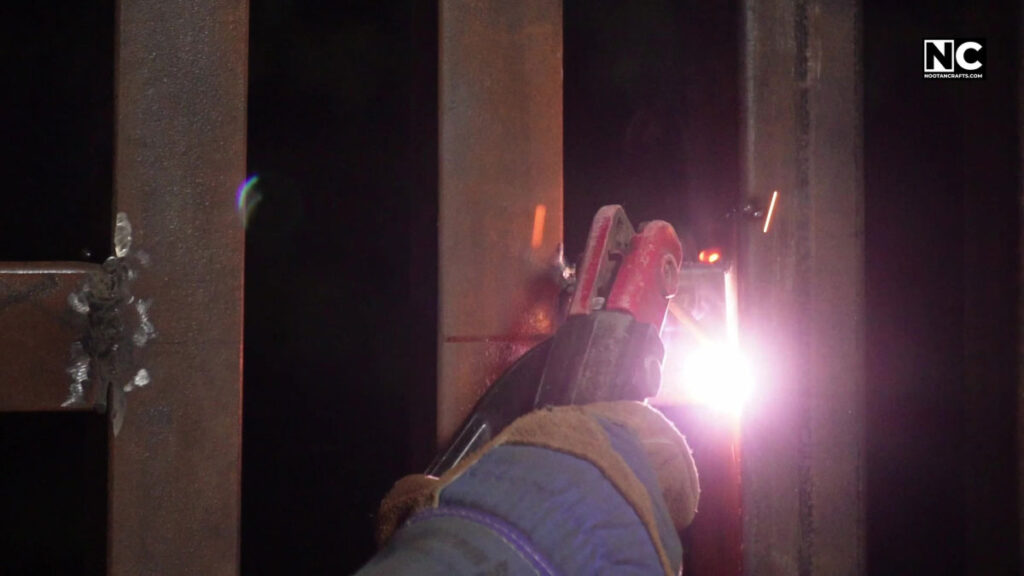
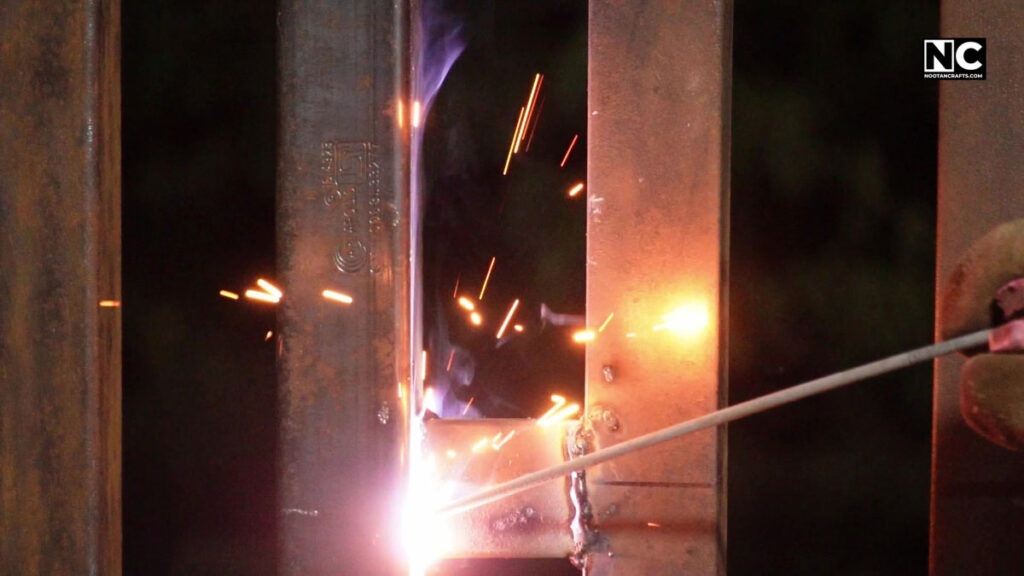
However all the designs were ready, but it still took me two days to attach them properly because it didn’t matter how perfectly you cut the parts. You always need to make some adjustments in real life, which takes extra time.
9. Grinding and Painting the Railing

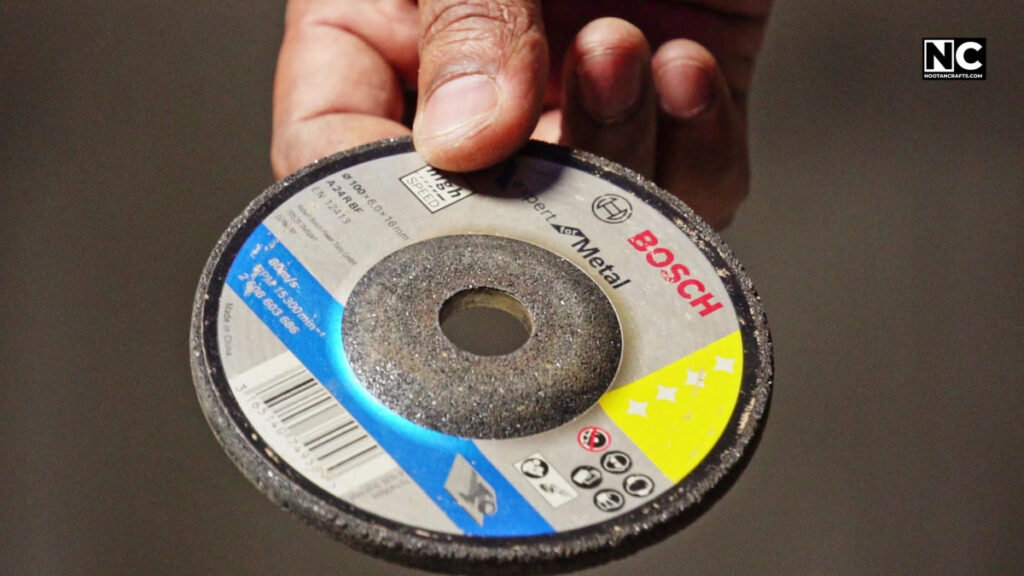
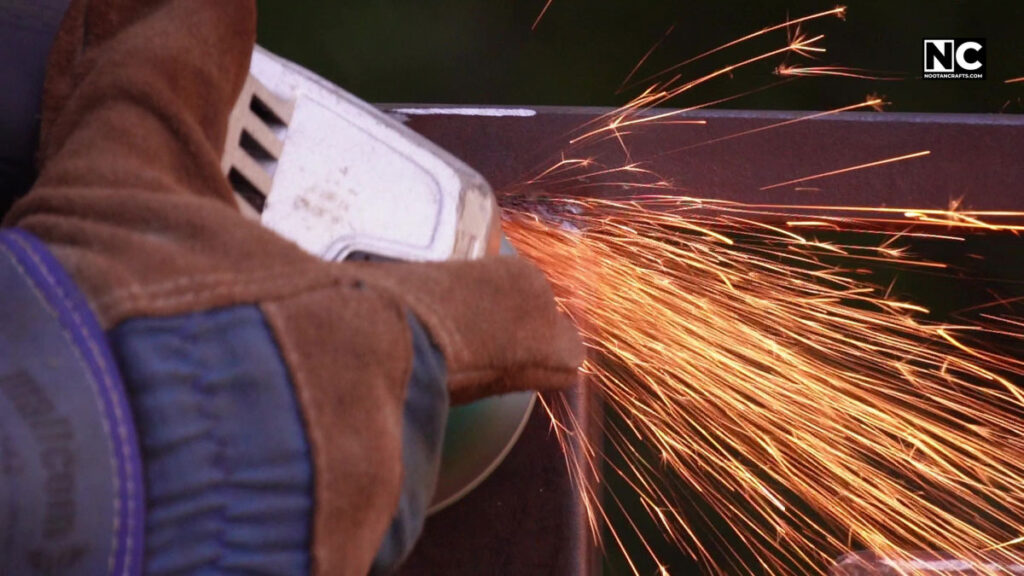
Now, the whole structure is ready. Now, I have to grind the weld before painting the railing. I gave more attention to the top and post joints where our hand will rest and sanded it with an 80-grit flap disk because any sharp burr or welding edge can cause injury. However, I used only a standard grinding wheel for the rest of the railing, which gave me adequate smoothness.

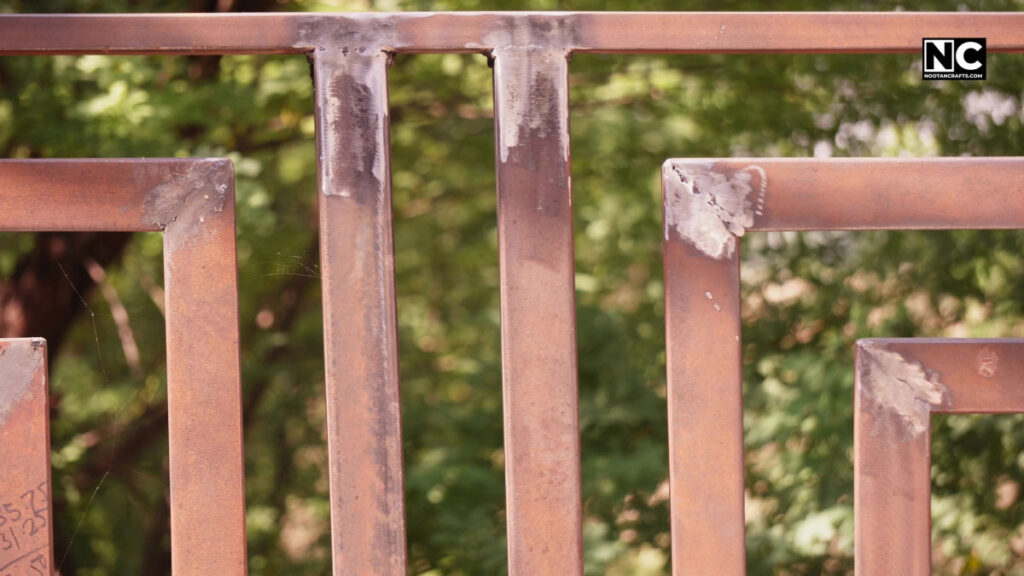

Now, it’s the most satisfying part – applying primer and paint because it will uncover the true beauty of the railing. Painting hides the imperfections and gives an even surface that looks attractive. First, I started by applying the primer with the help of a brush. I am totally in love with it. It looks gorgeous already before painting. After drying up the primer, I started applying the paint coat with the same brush, and it took me another two days to complete the process.
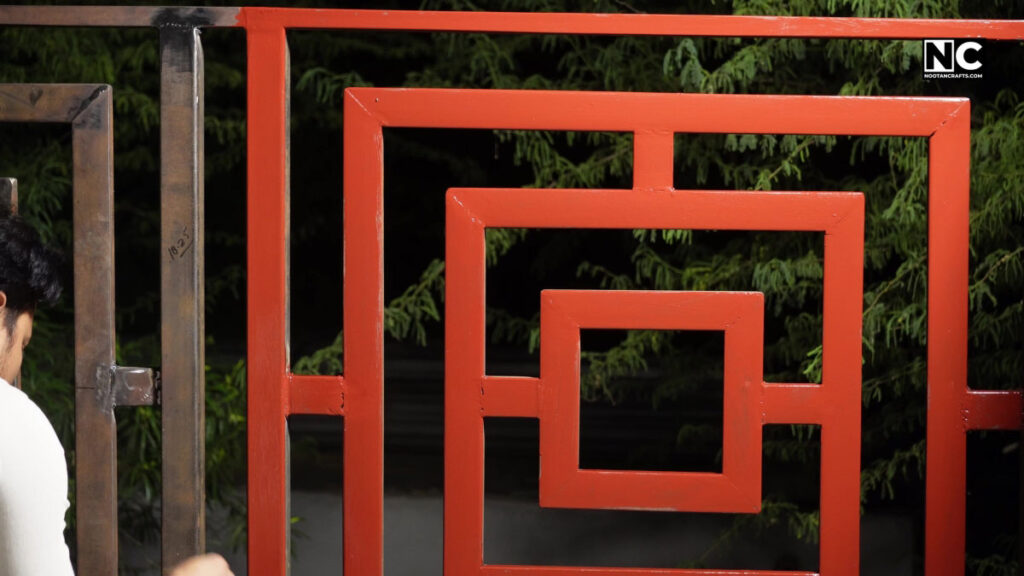
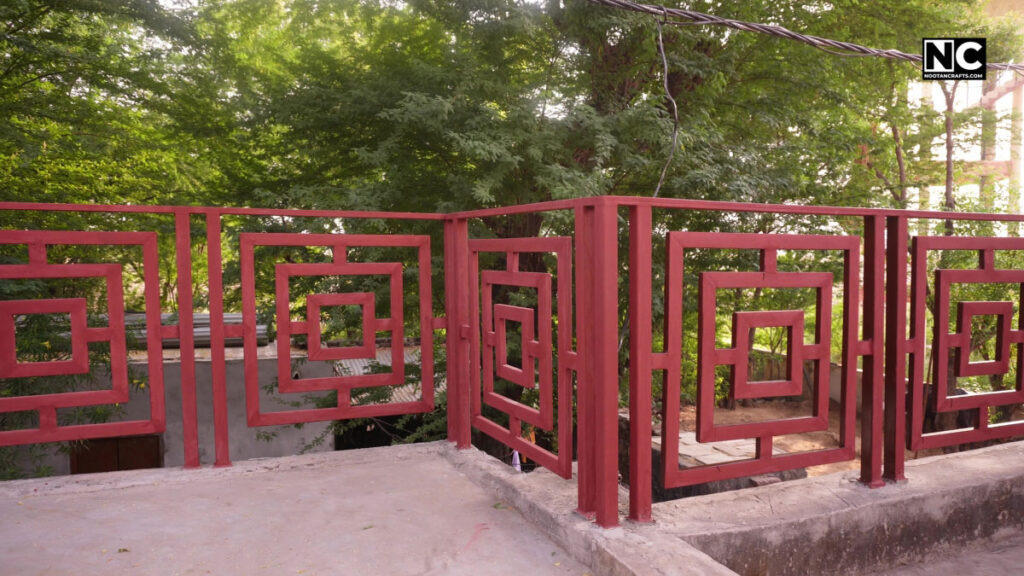
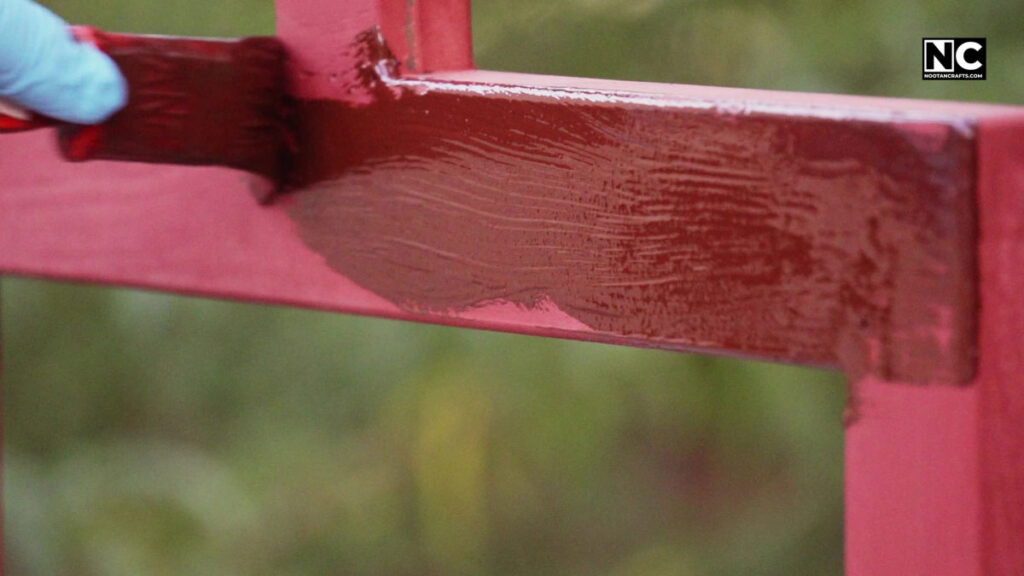
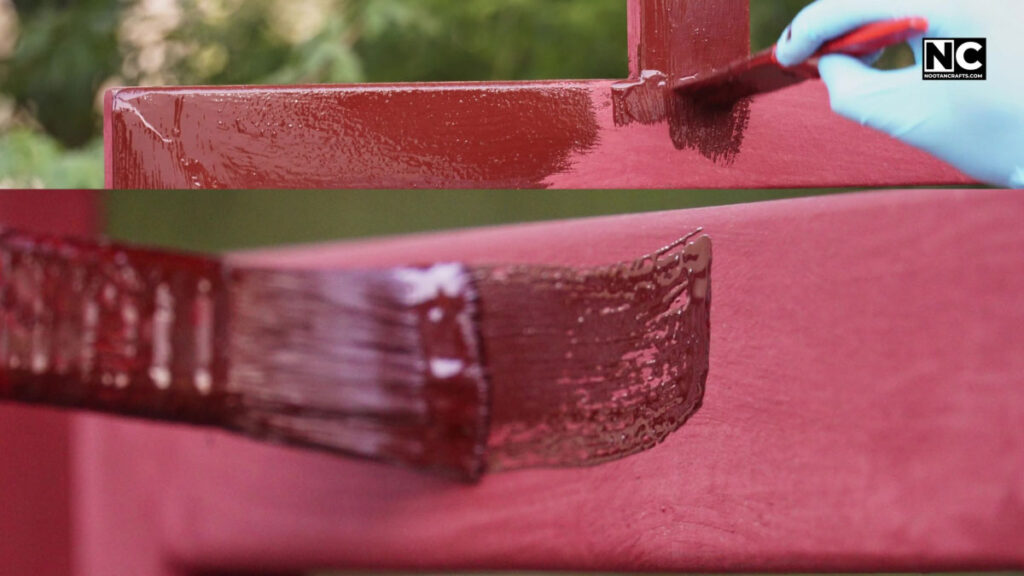

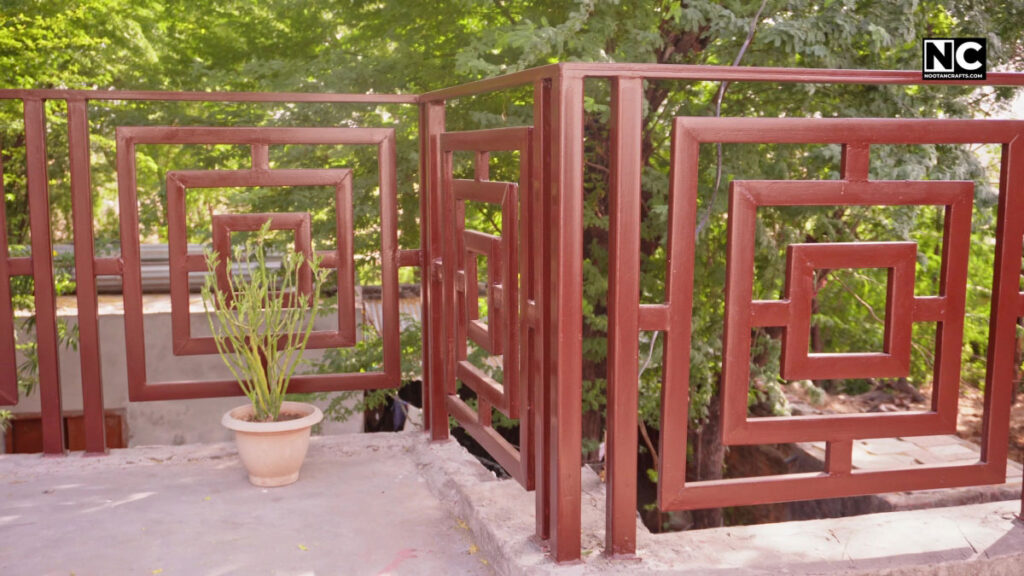
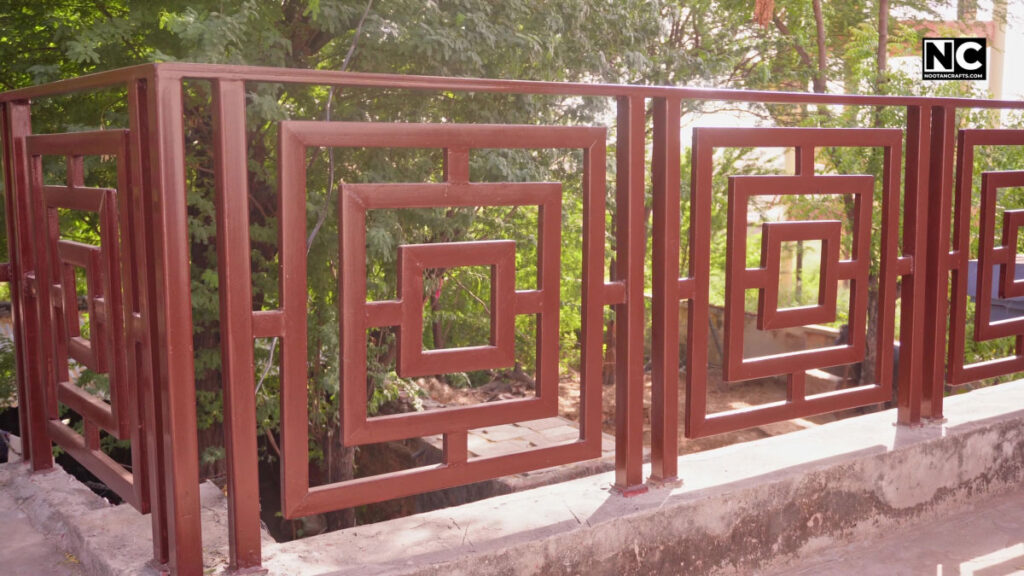
I spent around two and a half months on this project. Actually, I didn’t have much experience in welding, and it was my biggest project yet. Moreover, I had to shoot each scene along with working, which consumed a hefty amount of time. Before I show you the final result, here are a few life lessons from this project that I want to share with you.
10. Lessons I Learned from this Project
- Everything is possible if you have an open mind to learn new things and a willingness to leave your comfort zone.
- Don’t chase perfection; just do it. I know I have several flows in my welding, cutting, and finishing, but who cares as long as it serves its purpose and looks decent?
- Believe in yourself. If you don’t know something, it’s a great opportunity to explore yourself and discover something new.
How to make a Metal Railing for Balcony from Iron – Conclusion
There are countless better ways to do this project, but I shared my experience. I created a metal railing design for my house in Sketchup and turned it into a reality in two and a half months. It shows that if a beginner like me can do that, why can’t you?
Please don’t forget to share your thoughts; I would love to hear from you. If you really learned something new, please consider subscribing to my YouTube Channel and dropping a like. Thank you so much for reading until the end. I will see you in the next video; until then, keep crafting.

